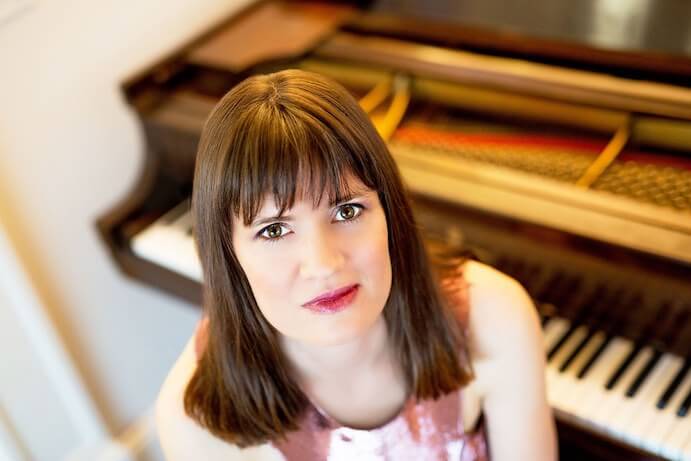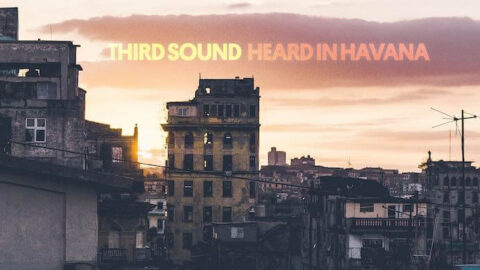Albums resulting from calls-for-scores tend to be a mixed bag, both thematically and stylistically. Since the paradigmatic album is composed to tell an overarching story or speak to a central theme, building one from selected entrants almost assuredly takes away that option. It then becomes the task of the performers and producers to find something else to be central to the album. In the case of Heard in Havana from Third Sound and innova Recordings/American Composers Forum, that “something else” is a focus on exceptional music from U.S. composers. Performed during Third Sound’s 2015 residency at the Festival de Música Contemporánea de La Habana, and recorded in New York a year later, Heard in Havana takes interest in its diversity of sound.

Details on the Strasbourg Rosace by Spencer Topel sets the tone for the album with a four-movement exploration through vast sonic territory. Utilizing the entire ensemble, Topel’s work creates ample room for ensemble virtuosity through a variety of means, which Third Sound adeptly achieves. The engineering also makes an impeccable first impression, with well-spatialized recording and careful complementing of the ensemble’s dynamic work.
Immutable Dreams: II. Microconcerto [in memoriam György Ligeti] has a tall task in directly emulating “one of the greats,” but composer Kati Agócs ultimately succeeds through a combination of captivating development and an earnest appreciation of her Hungarian heritage. Pianist Orion Weiss impresses in this microconcerto format, moving adeptly between keen soloistic lyricism and nuanced interplay with the ensemble. There is a great sense of conversationalism in Ingrid Arauco’s Fantasy-Quartet. The composition shows a deep respect for performers, giving each one moments of bravura without becoming heavy-handed. It asks many questions, content in not having them answered at times, and Third Sound’s performance does well to invite the listener into this “conversation.” Cellist Michael Nicolas excels in Fantasy-Quartet, popping out of the texture at the exact right times for satisfyingly fiery moments.

The album moves from inviting to commanding with a crowd of twisted things by Christopher Wendell Jones. Rhythmic precision and selective repetition contemplate the nature of memory. Jones presents a puzzle that is both intellectually and artistically interesting. Orion Weiss and violinist Karen Kim impress here, with consistent and convincing inflection through what must be a mentally exhausting performance. Flutist Sooyun Kim is given time to shine in Mieko by Kai-Young Chan, and she certainly makes the most of it. The flute takes on characters from Fumiko Enchi’s novel Masks, and both Chan’s composition/rendering and Kim’s performance deliver on the range of emotions. Shifting from erratic to plaintive to commanding on a dime, this performance is a moving character study.
Paean, Epitaph & Dithyramb by Jeremy Gill comes in three movements, each musing on Greek characters and poetic forms. Contemplating on past and future, Gill quotes older composers and styles without losing his own voice, instead presenting a rapidly shifting exploration of past, present, and future. Where Paean, Epitaph & Dithyramb embraces traditional forms in some regards, Amadeus Regucera’s Inexpressible (v.2) rejects them, opting instead to exaggerate and separate the various textures. While the physicality of this piece seems best experienced in live performance, Third Sound’s energetic delivery and innova’s production presents an impressive substitute.

Radians Phase II by Michael Harrison brings the expected tension and release of a piece of music in perhaps the least expected way possible. Placing equal temperament and just intonation at odds with one another, the ensemble and electronics create rhythmic motion through the “beat” of interference patterns, created when the ear perceives two slightly different pitches at once. Harrison provides an edifying, unnerving, and oddly satisfying exploration of pitch ratios. A lot of credit must be given to the ensemble here, who have to convincingly fill in the cracks between equal temperament and justly-tuned intervals. Cindy Cox’s melodic and subtly pointillistic Wave: I. quietly urgent is placed in perfect contrast following Harrison’s work. There is a delightfully cathartic balance of contentedness and longing in this piece, one which Third Sound highlights with graceful exploration of Cox’s memorable themes.
Jennifer Higdon closes out the album with Smash, a sonic commentary on the twenty-first century demand for speed. A near-constant 16th-note underpinning drives the piece, and while the music still ebbs and flows, the relative moments of respite still demand vigor, collectively leaving performers and audiences exhausted by the end: a fun way to make a point. The ensemble excels in this finale, and while she has an unassuming role on most of the album, clarinetist Romie de Guise-Langlois demonstrates her virtuosity in Smash with seamless shifts between short bursts of rhythm and longer, lyrical phrases.
Between these ten pieces, there aren’t many common threads. Given that they were all written by U.S. composers in the last 20 years for a limited set of instruments, they’re about as dissimilar as one can find. In this way, pointing to something central to appreciate the way die-hard listeners usually do with an album feels harder. But in the end, the lack of a central idea is the central idea. On Heard from Havana, Third Sound celebrates seventy-eight minutes of great music from ten composers who, in all likelihood, have very different relationships with what it is to be “American.” Right now–especially right now–that’s music worth listening to, and an idea worth appreciating.
























